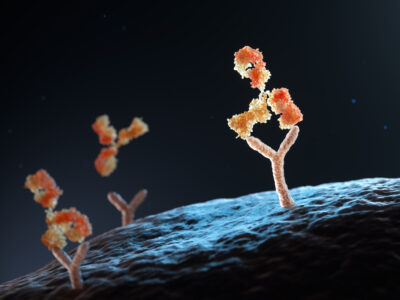Table of Contents[Hide][Show]
What’s the thermometer setting in your room right now? Chances are, it isn’t exactly 98.6ºF.
But that’s the ideal temperature for your body. And more than that, just a few degrees of deviation in one direction or the other can be dangerous—even fatal.
Yet we know that people can live in a wide variety of climates, from icy tundras to hot deserts. How does that happen?
It’s all due to homeostasis and your body’s incredible ability to regulate its most vital internal conditions.
What Is Homeostasis?
Homeostasis comes from the Greek words for “same” and “steady.” It was first used by Dr. Walter Cannon in his 1030 book, The Wisdom of the Body.
This scientific term refers to the different ways that your body—or that of any other living being—maintains and regulates the stable conditions needed for survival and optimal health.
Certain internal conditions must remain relatively constant, despite the external environment. For example, if your blood pressure drops precariously low, your internal organs must work to stabilize it or risk failing.
Some examples of homeostasis include maintaining steady levels of:
- Temperature
- Water
- Glucose
- Oxygen
- pH
If homeostasis fails, your body risks disease and, eventually, death.
One important thing for you to keep in mind, however, is that homeostasis doesn’t rely on a precise number or level. Instead, there is usually a range for variables. Your blood pressure, for example, may be slightly different from someone else’s. As long as they both fall within the acceptable numbers, both of you could be equally healthy.
How Homeostasis Works
Homeostasis relies on biological feedback from your body. This feedback is known as a negative feedback loop, but that’s actually a good thing!
- A negative feedback loop means that your body is working to reduce fluctuation and maintain its inner stability.
- A positive feedback loop means that the variables in your homeostatic systems are moving further away from the acceptable variables.
Your body sends signals when a less-than-ideal condition occurs. The proper regulatory system then leaps into action, working to reduce these signals by achieving stability once again.
More importantly, when your body is functioning as it should, homeostatic reactions are automatic and inevitable.
For example, the human body needs to maintain a fairly constant temperature of 98.6ºF to survive. When you start to overheat, one of your body’s first reactions is to release that heat by sweating. On the other end of the spectrum, if your body’s internal temperature drops, then it will try to maintain a constant temperature by slowing down blood circulation.
In either case, your body’s internal systems react to signals that something has been thrown off balance. They do their job by working to go back to the optimal condition.
Different species use homeostasis to live comfortably in their unique environments.
Let’s go back to our previous example, controlling internal temperatures. Humans are able to maintain their temperature much more effectively than reptiles, which allows us to live in a wider selection of environments.
How Your Body Maintains Homeostasis
Your body’s different systems are responsible for maintaining its optimal steady state. They “listen” on a cellular level for signs of distress.
When one of the key variables falls out of the acceptable range, your nervous system detects this deviation and sends a signal to your brain. Your brain then sends your muscles, organs, and/or glands to work. Ideally, they’ll correct the deviation, and your body will return to its ideal, homeostatic state.
In many instances, the ways in which your body maintains homeostasis are unnoticeable. Going back to our temperature example once again, you may feel cold, but you probably won’t notice that your circulation has slowed to maintain warmth.
However, there are times when homeostasis does trigger a more conscious reaction. To regulate body temperature, you may move to a shady spot or drink a cold glass of water when you feel hot, or you may reach for a sweater or tuck your hands into your pockets when you start shivering.
Not all homeostatic regulations affect your whole body, like maintaining your temperature does. For example, your stomach’s pH level is different from that of other organs. And as long as the pH level is within its acceptable numbers, your stomach is maintaining its ideal balance.
Each organ or system seeks to maintain its own homeostasis, and as long as this is achieved, your body will be healthy overall.
Examples of Homeostasis
Your body works in big and small ways all day to maintain homeostasis. Something as simple as going for a walk (raising your body temperature) or drinking a glass of juice (raising your glucose level) can trigger a negative feedback loop and evoke a biological response.
Let’s look at some of the most common ways in which your body maintains homeostasis.
Temperature
We’ve talked about maintaining your body temperature several times. This is one of the most important variables in your body, because the safe range is relatively small.
When your temperature falls below or rises above the safe temperature range, your body will immediately go to work to bring your temperature back to an acceptable degree.
A lower body temperature will cause uncontrollable shivering, for example, which generates heat from your muscles. Or you might get goose bumps, which trap a layer of warm air close to your skin.
If your body temperature gets too high, you start to sweat to let off heat. Your skin gets hot and flushed, which helps evaporate the sweat and cools you off. Your blood flow to your skin also increases, which releases internal heat to your surroundings.
Glucose
A blood sugar level in the right range is vital to maintaining a healthy body.
If you begin to experience hyperglycemia—AKA when your blood sugar gets too high—your body releases more insulin. Insulin transports glucose from your blood to your cells, where it’s stored for energy later. This lowers your blood glucose levels.
On the other hand, if your blood sugar drops (hypoglycemia), your body converts glycogen (the sugar stored within your cells) to glucose. This releases sugar back into the bloodstream, returning your levels to normal once again.
If you are trying to support stable blood sugar levels naturally, we recommend BeLiv, the #1 rated blood sugar formula.
Toxins
Toxins in your body can wreak havoc on all of your systems and throw off your homeostasis. When your body perceives them, it will signal to your kidneys and urinary system to eliminate them.
Your kidneys function as your body’s filtration system. They remove waste, toxins, and excess water from your blood. These substances then exit the body through your urinary tract.
Your body can also eliminate toxins through sweat, solid waste, and even by exhaling extra carbon dioxide.
Related
12 Tips For Detoxing the Body
Toxins are all around us, but by adding these 12 healthy habits to our daily lives, we can detox our bodies and get back to feeling our best.
Blood Pressure
Blood pressure is a crucial component of good health, and it’s essential for your body to maintain it within the correct range.
While blood pressure changes go largely unnoticed, your body will detect them on its own. Your brain will then signal to your heart to speed up or slow down to bring your blood pressure back to a more acceptable range.
pH Levels
Your body needs the right balance of acids and bases to function its best. While the pH scale measures from 0 (very acidic) to 14 (very alkaline), your optimal blood pH is in the narrow range of 7.35 to 7.45
Your lungs are in charge of maintaining homeostasis in your pH levels. They change the speed and depth of your breathing as needed.
Breathing deeper or faster expels more carbon dioxide and increases your pH level. Breathing more slowly expels less carbon dioxide and lowers your body’s pH level.
For the most part, the changes in your breathing pattern are subtle and will go unnoticed. However, every once in a while you’ll notice the changes in your breathing, such as during an intense workout.
Ways to Encourage Homeostasis
Homeostasis generally occurs without you even realizing it. While you might notice some of the warning signs of hypoglycemia (shaking, weakness, confusion, blurred vision), you certainly won’t notice your body converting glycogen to boost your glucose level.
But although homeostatic reactions are automatic, you’re responsible for keeping your body and organs healthy enough to carry them through.
Here are some ways you can boost your overall health and wellbeing, so your body is strong enough to maintain homoeostasis.
- Eat a nutritious, balanced diet. Include plenty of fresh fruits and vegetables, as well as protein and other essential nutrients.
- Avoid excess sugar, sodas, and overly processed foods or snacks. (Here are 6 Tips To Stop Being A Junk Food Junkie.)
- Cut back or eliminate alcohol and caffeine.
- Get an adequate amount of sleep.
- Exercise moderately and stay active throughout your day.
- Reduce stress as much as you can.
- Stay hydrated; drink plenty of water.
- Detoxify your body with an immune system regulator, such as our favorite one from Just Thrive.
Related
MASTER Your Immune System with Dave Asprey of Bulletproof Radio
About the podcast: Dave Asprey is a four-time New York times bestselling science author, considered the “father of modern biohacking,” host of the Webby award-winning podcast Bulletproof Radio, and has been featured on the Today Show, CNN, The New York Times, Dr. Oz, and more. Over the last two decades Dave has worked with world-renowned …
You can also help your body by knowing what “feels right.” When you notice that something feels wrong, either physically, emotionally, or mentally, you can make the necessary alterations to avoid any disruptions to homeostasis.
For example, you have a new coworker who loves bringing in delicious home baked goods. But, you may notice your body feeling sluggish or tired after your new mid-morning muffin habit.
Once you put two and two together and realize that your tiredness is probably due to your blood sugar crashing, you can also assume that you’re making your body work harder to keep your glucose levels balanced.
In this case, you can make homeostasis easier on your body by choosing a healthier morning snack, such as nuts, probiotic yogurt, or fresh fruit.
You can also help your body by supplementing its antibodies, especially the strongest one: Immunoglobulin G (IgG) with our favorite IgG booster from Just Thrive. It strengthens your gut lining, keeping toxins locked inside until they can be eliminated safely.
Final Thoughts
Your body’s ideal state is homeostasis: a steady, stable internal environment.
To achieve homeostasis, your body is constantly on the lookout for precarious conditions, such as an elevated internal temperature. When your body detects a potentially dangerous change, it sends signals to its organs, muscles, and cells to take corrective actions and maintain homeostasis.
While homeostasis is largely automatic and inevitable, your healthy lifestyle choices make it easier for your body to reach its optimal state. So, support your body’s health with our suggestions above to make homeostasis that much easier to achieve throughout your life.
You May Also Like…






